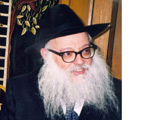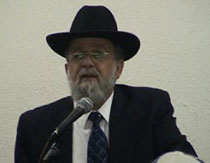Beit Midrash
- Sections
- Chemdat Yamim
- Ein Ayah
Avraham instituted the prayer of Shacharit, as it says: "Avraham awoke in the morning at the place that he stood (amad) (Bereishit 19:27), and amida is prayer, as it says... Yitzchak instituted the prayer of Mincha, as it says: "Yitzchak went out to supplicate (lasu’ach) in the field toward evening" (ibid. 24:63), and sicha means prayer, as it says... Yaakov instituted the prayer of Arvit, as it says: "He encountered (vayifga) in the place and retired there for the sun set" (ibid. 28:11), and pegia means prayer, as it says...
Ein Ayah: These three terms for prayer, amida, sicha, and pegia correspond to three benefits of prayer.
The basic function of prayer is to stabilize the spiritual level that a person attains so that it not be forgotten through the busy day and fleeting desires. The time when this is most necessary is in the morning, before one embarks upon a day of activity filled with physical needs and feelings. That is why the verb used for Shacharit is amida (standing). The most appropriate person to institute it was Avraham, who was the first of the believers who stood up to ten difficult tests and to all of those who opposed him. He indeed was the great "stander."
The term sicha, while referring in this case to prayer, is used in another context having to do with plants. The common denominator is the element of growth, in this case, so that the spirit gets new emotional powers. This is most appropriate at Mincha time when one is trying to shake off fleeting concerns. That allows the spirit to be elevated with natural holy feelings and grow "new branches and foliage," like a tree. This natural holiness is connected to matters of strict judgment (din), as something that strays from its natural state is more likely to receive a natural punishment. Din was indeed Yitzchak’s attribute.
There is a final element of prayer that can elevate one to a special level of or close to the level of prophecy. They encounter (pog’im) higher levels than are natural and cling to Hashem with a pure heart. The time that is suitable for such an experience is night time, as the author of Chovot Halevavot says that prayer at night has special impact. Truly special people might also receive, specifically before, during, or after sleep, special types of revelations (even if short of prophecy) that one cannot get through the physical world. These types of events are best captured by the term pegia, as they unexpectedly come upon a person in a manner that is beyond natural. Indeed, regarding Yaakov, his most profound prophecy, with the image of the angels on the ladder, took place immediately after the prayer that was described as pegia, and the prayer apparently helped prepare him for that lofty experience.
The Philosophical Basis of the Dispute Whether Arvit Is Mandatory
(condensed from Berachot 4:4)
Gemara:
There are two opinions among the Tanna’im whether the night prayer of Arvit is an obligatory or optional prayer.
Ein Ayah: We have just explained that the prayer at night is designed to help unusually spiritual people attain unnaturally high levels that enable them to experience revelations that approach prophecy. Therefore, it is reasonable that there should be some question as to whether there is an obligation for one to take steps that can take him well beyond the normal expectations for a good Jew. Perhaps this is applicable only for those who "volunteer" to reach such levels and have the capabilities of perhaps succeeding at it. It can thus be a suggested option for those who are suited for it, and through those people, others who attach themselves to holiness will benefit indirectly as well.

Why to Learn Torah
Various Rabbis | 5771

An Intellectual Fear of Hashem
Various Rabbis | 6 Cheshvan 5770

The Benefits of Torah and of Eating
Various Rabbis | 5770



















